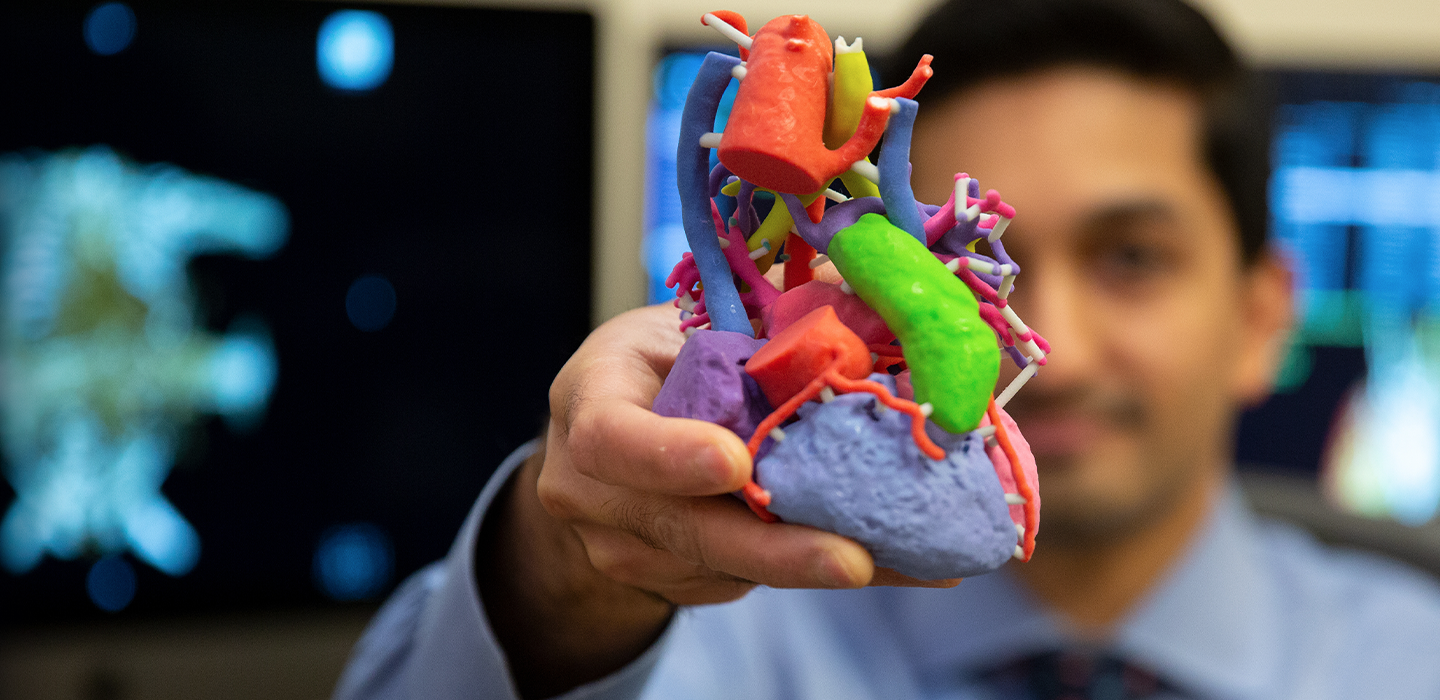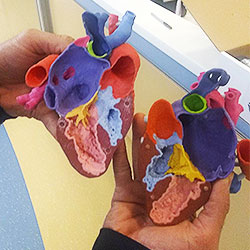Samantha: New Possibilities
A complicated procedure would give Samantha a better chance at a healthy life. New technology helped her doctors decide if it was worth the risk.

 Born with a severe heart defect – a single rather than a two ventricle heart – 12-year-old Samantha faced barriers to a normal life. Surgeons at UCSF Benioff Children’s Hospital San Francisco had performed multiple life-saving operations, but she was still at high risk for major long-term health problems: liver disease, heart failure, arrhythmias.
Born with a severe heart defect – a single rather than a two ventricle heart – 12-year-old Samantha faced barriers to a normal life. Surgeons at UCSF Benioff Children’s Hospital San Francisco had performed multiple life-saving operations, but she was still at high risk for major long-term health problems: liver disease, heart failure, arrhythmias.
What if, Samantha’s medical team wondered, they could do better?
If they could give Samantha’s heart four chambers, she would be able to achieve relatively normal blood circulation – and a better life. But that would mean performing a complex and high-risk surgery on a patient whose health was currently stable.
“Very few programs would take this on. Most would say to leave well enough alone,” says Shafkat Anwar, MD, Director of the Pediatric Heart Center’s 3D+ Program and Co-Director of the UCSF Center for Advanced 3D+ Technologies.
The team at UCSF has been around from the beginning...so I trust them with her life.
The Center’s new technology, made possible through donor support, allows doctors to visualize patients’ hearts in 3D, practice surgeries on heart models in advance, and much more. This technology would enable Samantha’s care team to determine if the operation would have a good chance of success.
Samuel, Samantha’s father, was ready to pursue whatever her UCSF team thought best. This would be his daughter’s fourth heart surgery – the first performed when she was just 3 weeks old. Many of the same nurses and doctors have been caring for her since birth, when she spent her first several months in the hospital. In fact, her care at UCSF started even before she was born: She was diagnosed with both spina bifida and her heart condition in utero.
“The team at UCSF has been around from the beginning, even before my daughter took her first breath, so I trust them with her life,” Samuel says.
After a full day of measuring and testing Samantha’s heart function, surgeons had the information they needed to determine if the surgery was possible, as captured in a life-size 3D model of her heart. It was.
“I actually got to hold the model in my hand,” Samuel says. “My daughter is petite, so I was surprised when I saw it. She’s got a big heart!"

The complicated surgery was successful, and it delivered swift and clear improvements to Samantha’s health. She’s reduced her medications. Her asthma has improved. Her blood oxygen levels have dramatically increased. She can run without wheezing.
Samuel is grateful they went ahead with the risky procedure. “It gives her more opportunities. She doesn’t have to say, ‘I can only run a short time’ or need to take so many breaks. She can face things head on.”
Dr. Anwar is proud of the new technology that has advanced care for kids like Samantha.
“We want to give her and every child the best quality life for the long term,” he says. “We can now look at existing patients and rethink what we can do to improve their health for a lifetime.”